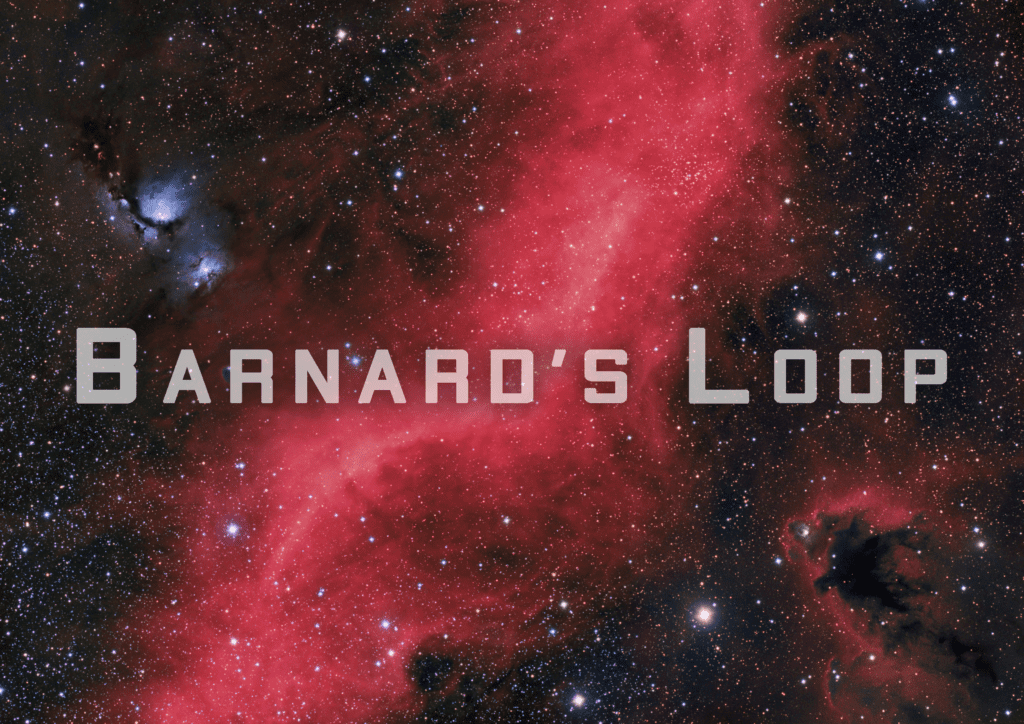Overview
- Object: Emission nebula
- Constellation: Orion
- Right ascension: 05h 27.5m
- Declination: −03° 58′
- Apparent size: 10°
- Apparent magnitude: 5
- Radius: 50 parsecs/150 lightyears
- Distance: 440 parsecs/1434 lightyears – higher estimate
- Designations: Sh 2-276

General Facts
Barnard’s Loop is a large emission nebula in the constellation of Orion, at a recently estimated distance of between 518 and 1484 light years from our Solar System. It is part of the Orion Molecular Cloud Complex, which also contains the impressive and easy to view Orion Nebulae, and the Dark Horsehead. As the name would suggest, the loop takes the form of a large arc, and reaches across much of the Orion constellation, centered predominantly around Orion’s Belt and the Orion Nebula. The brightest stars in the Orion Nebula for the Trapezium Cluster and it is the bright stars that are believed to be responsible for ionizing the loop.
Barnard’s Loop extends across most of Orion and covers around 600 arcminutes. It is thought to be around 1434 light years away from us, with a radius of about 300 light years, but other estimates place it around 518 light years away with a radius of around 100 light years. As our instruments and observations become more advanced, our data improves and become more accurate.
Under the very dark night sky, it can be seen with the naked eye, but to get the most impressive visuals, it is best seen captured through a good astrophotography camera, particularly in long-exposure photographs. Photo editing software can also be used to improve the detail that you see from nebula and gas clouds, by adjusting different levels of light to enhance what our eyes naturally struggle to see.
The nebula was given the Sharpless designation Sh 2-276.
History
- It is thought that Barnard’s Loop originated in a supernova explosion about 2 million years ago, which may have also created several known runaway stars, including AE Aurigae, Mu Columbae and 53 Arietis.
- These stars are believed to have been part of a multiple star system in which one component exploded as a supernova.
- It was named after the pioneering astrophotographer E. E. Barnard who photographed it and published a description in 1894.
Image Sources:
- Bernards Loop – https://www.swagastro.com/uploads/2/3/3/7/23377322/m78_mosaic_taks.jpg